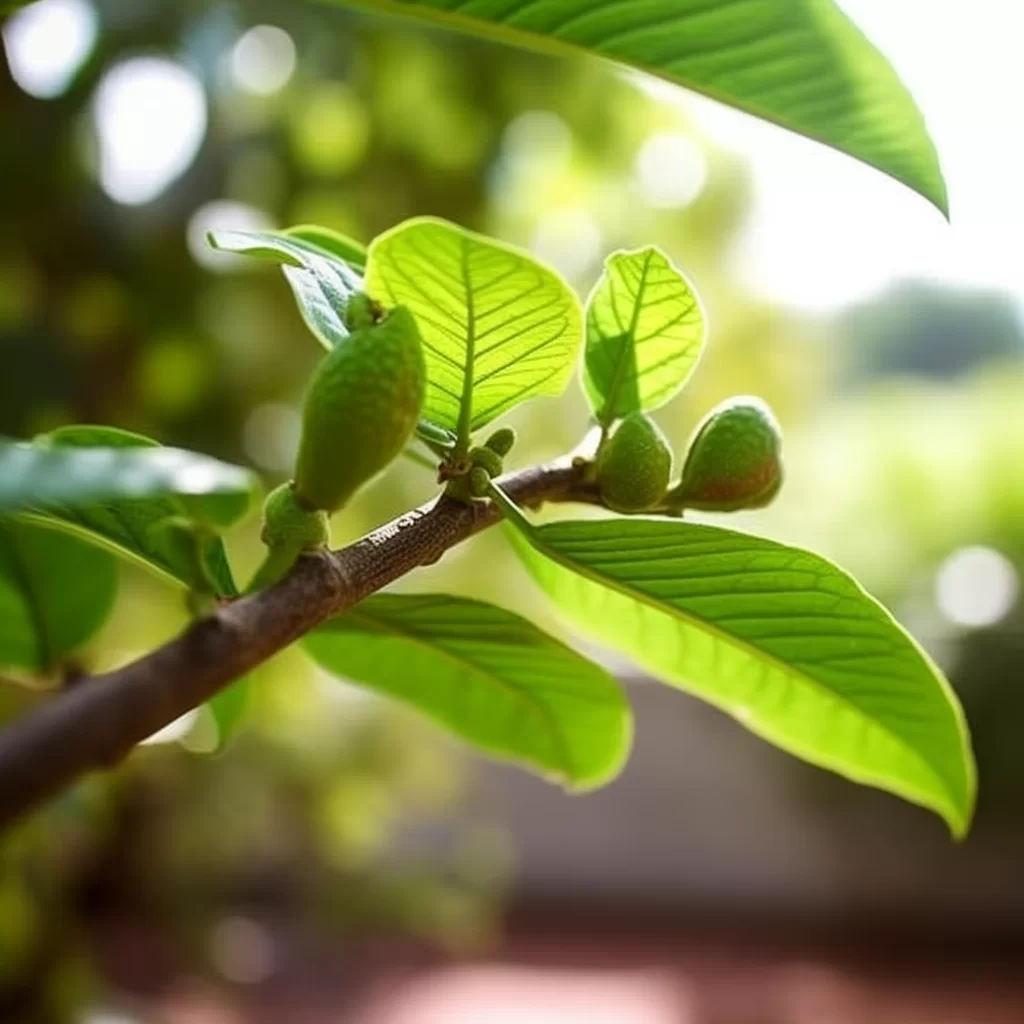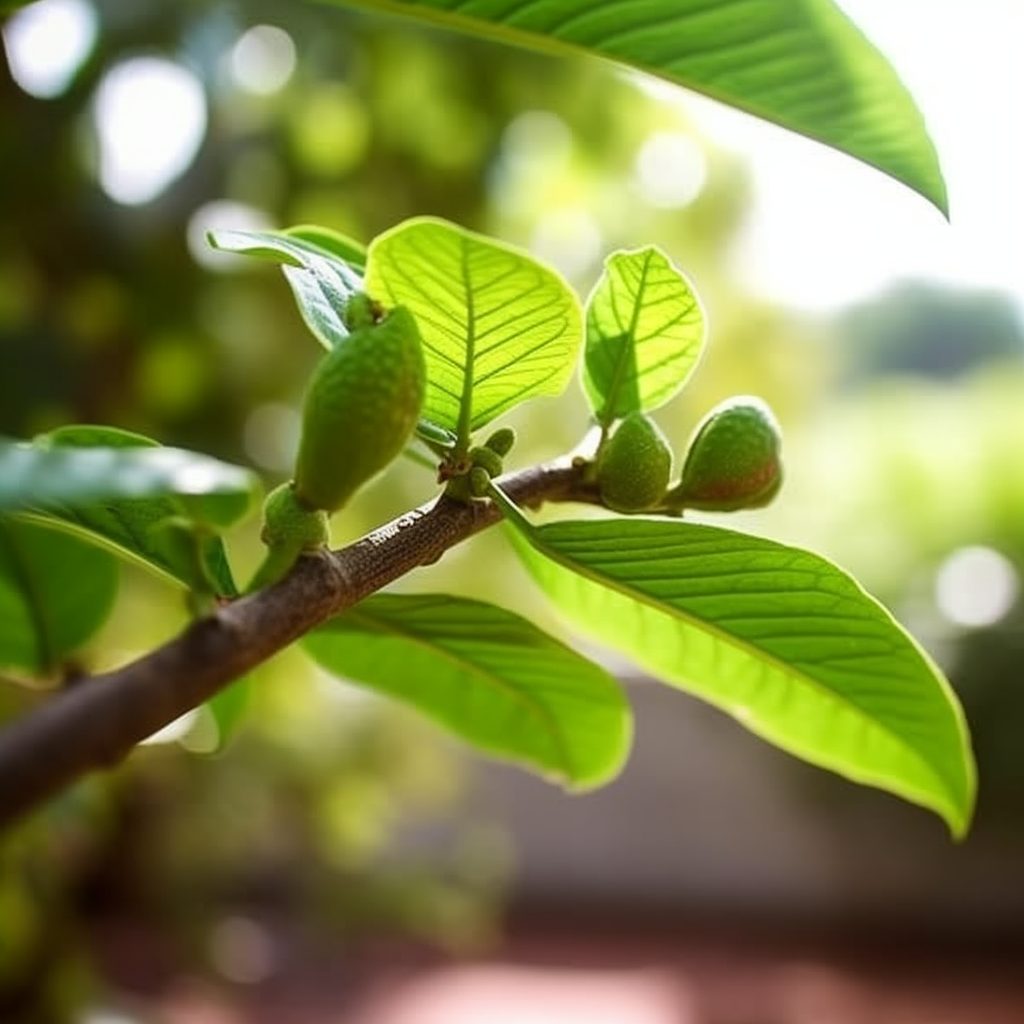Story of Day :
Contents
The Guava Plant: Complete Guide and Care Tips
Ahoy there, fruit-lovers! Looking to add some fruity goodness to your garden? Well, look no further than the guava plant! This little beauty not only gives you sweet and juicy fruits packed with vitamins, but it’s also a breeze to take care of. That’s right, folks – you don’t need a green thumb or magical powers to grow this gem. And we’re here to prove it with our complete guide on how to nurture your very own guava plant. So sit back, relax and get ready for some serious fruity fun!
What is a Guava Plant?
Oh, the guava plant! A fancy name for a tiny tree or shrub that produces some of the yummiest fruit out there. It’s like nature took a bite out of a lemon and mixed it with sugar to create this sweet and tangy sensation that makes your mouth water just thinking about it. And don’t even get me started on how tall this bad boy can grow – up to 10 meters! That’s like basketball player status in the plant world. And those leaves? So chic and glossy green, you’d think they were on the cover of Vogue magazine. It’s no wonder why people go bananas (or should I say guava-nas?) over this fruit tree; it’s simply delicious and stylish all at once.
Oh boy, have you ever seen the variety that comes with guava fruits? It’s like a game of surprise every time you cut one open! Sometimes you get these tiny little berries that are just adorable, but then other times you’ll find yourself staring down a softball-sized behemoth. And the colors inside? Don’t even get me started. You might think all guavas are pink on the inside, but nope – white and yellow can also make an appearance. Oh, and let’s talk about those seeds. Some varieties have seeds that are totally fair game for munching on (just watch your teeth!), while others could break a jaw if you’re not careful. Ahh, nature is so unpredictable – even when it comes to something as seemingly mundane as fruit!

Growing Conditions
Guavas, those plump and juicy little fruits that are oh-so-satisfyingly delicious, are like the divas of the fruit world – they demand warmth, sunshine and attention. They thrive best in tropical climates where the sun is always shining and everything is sizzling hot. But don’t you fret if you live somewhere a little less tropical – these bad boys have been known to grow successfully in sub-tropical regions all around the world. While they love to be basking in full sun exposure, they’re not total drama queens – they can handle a bit of shade (who doesn’t need a break from all that heat, am I right?) especially during those sweltering summer months. So let’s give a round of applause for our guava friends who know what they want and aren’t afraid to ask for it!
- Soil: Guavas prefer well-drained soils with pH ranging from 5-7.5
- Temperature: They do well in temperatures ranging between 15-30 degrees Celsius
- Rainfall: Moderate rainfall of about 1000mm per year is ideal for growth
- Fertilizer: Fertilize young trees every three months using balanced fertilizer ratio (N:P:K) of about 6:6:6 Nitrogen helps produce green foliage while phosphorus promotes flowering and fruit production
Propagation Methods
So, you wanna grow some guava? Well, there are a few ways to do it! You can start from scratch with seeds, channeling your inner plant parent and nurturing those little guys until they sprout into full-fledged guava trees. Or, if you’re feeling more ~advanced~, you could try propagating through cuttings. It’s like cloning but for plants – just snip off a piece of an existing tree and watch it grow into its own independent entity. And if you’re feeling really fancy (or just want to impress your plant-loving friends), there’s always air layering. This method involves creating a mini greenhouse around part of the existing tree in order to coax it into growing roots on its own before separating it from the parent plant. It’s like performing surgery on a living thing…which is both kinda cool and kinda creepy at the same time. Whatever method you choose, just remember: with great guava comes great responsibility (to eat lots of delicious fruit).
- Seeds: Collect the seeds from a ripe guava fruit. Wash and dry them. Sow the seeds in well-drained soil about 1-2cm deep. Germination will take between 2-8 weeks.
- Cuttings: Select a healthy branch about 15cm long with no flowers or fruits. Remove all leaves except for two at the top of the cutting. Dip in rooting hormone powder and plant in soil mixture of sand, peat moss and perlite or vermiculite to enhance drainage.
- Air Layering: This is where you induce roots to grow on a live branch before cutting it off for replanting. Make small cuts around a branch just below a leaf node using sterilized pruning shears, apply rooting hormone gel on these points then wrap moist sphagnum moss around it tightly with plastic wrap until roots form after about six to eight weeks before removing from parent tree.
Pest Control
Well, well, well, look who we have here! The guava plant thinks it’s all tough and pest-resistant. But let me tell you something, my fruity friend. Just when you thought you were safe from pesky invaders trying to suck your sap and wilting your leaves – BAM! Mealybugs come crawling in like they own the place. And if that wasn’t bad enough, here comes scale insects thinking they can just set up shop on your branches without paying rent. Oh no no no, we’re not done yet! Spider mites want in on the action too. They think they can just spin their webs and snack on your sweet sap without any consequences? Ha! Think again little spiders. So there you have it folks – even the mighty guava plant is not immune to a good ol’ fashioned pest infestation.”
To control infestation use organic pesticides like neem oil sprayed onto foliage regularly especially when young tender growth appears as well as keeping mulch away from trunk which attracts rodents attracted to fallen fruits as they can also infect trees with bacterial diseases such as anthracnose which cause black spots developing on fruits making them unmarketable or edible by humans due high level toxicity levels this fungus produces not only damaging guavas but other fruits as well.
Harvesting
Ah, the guava fruit – a delicacy of the tropics! When these babies are ripe for the picking, they emit a distinct aroma that will make your nose hairs dance with joy. And, let’s not forget about their beautiful color that screams “I’m ready to be eaten!” But beware, my friend. Once those guavas are plucked from their tree-homes, they will not continue ripening. Nope, it’s like they hit pause on their journey to deliciousness. So please do yourself a favor and wait until those bad boys are fully mature before you start chomping down on them. Trust me when I say that you want them at peak ripeness – it’s what separates the novices from the pros in the world of guava-picking. And how do you know if your guavas made it to maturity? Just give ’em a whiff or take a bite – your senses will tell you everything you need to know!
Conclusion
Listen up, green thumbs! If you’re looking for a plant that’s easy to take care of and produces delicious fruit, then look no further than the guava plant. This little guy is a real champ in the garden game, providing heaps of juicy goodness that’s packed with all sorts of vitamins and nutrients. And best of all? Growing a healthy guava plant is easier than stealing candy from a baby. That’s right folks, just follow the simple tips we’ve laid out in this article and you’ll be on your way to guavalicious success in no time. So what are you waiting for? Get out there and add some tropical flair to your garden with this fruity favorite!
